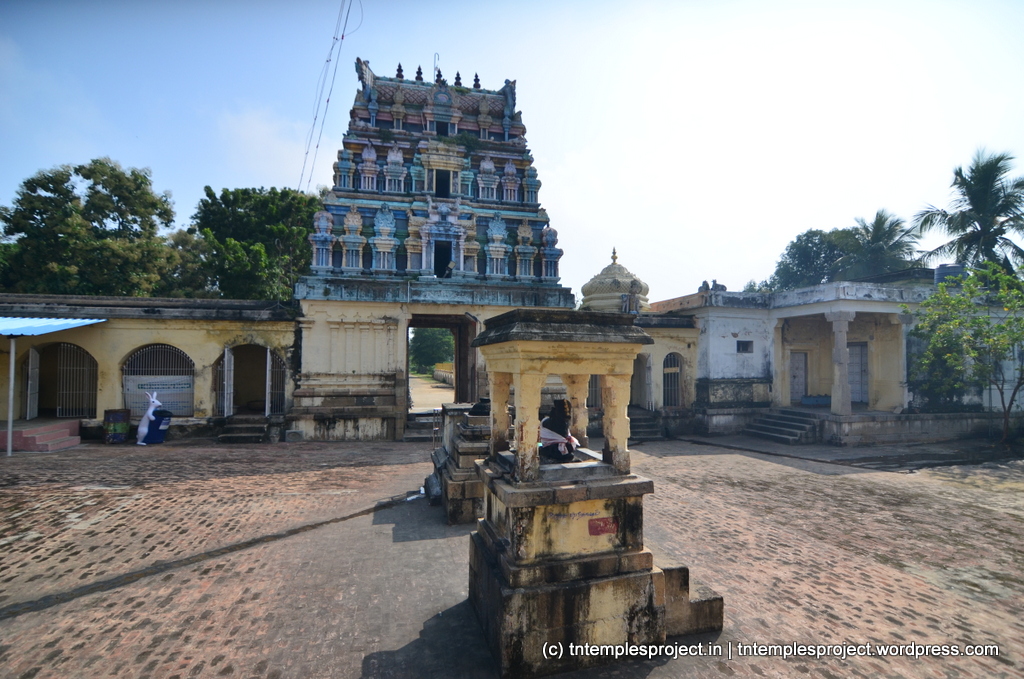Basic information about the temple
| Moolavar: | Chayavaneswarar | Ambal / Thayar: | Kuyilinum Nanmozhiammai |
| Deity: | Siva | Historical name: | Tiruchaaikkaadu |
| Vriksham: | Saya | Teertham: | Kaveri, Airavata Teertham |
| Agamam: | Age (years): | ||
| Timing: | 7 to 12 & 4 to 7.30 | Parikaram: | |
| Temple group: | Paadal Petra Sthalam (Kaveri Vada Karai) | – | |
| Sung by: | Temple set: | ||
| Navagraham: | Nakshatram: | ||
| City / town: | Sayavanam | District: | Nagapattinam |
| Maps from (click): | Current location | Mayiladuthurai (28 km) | Nagapattinam (53 km) |
| Tiruvarur (58 km) | Kumbakonam (65 km) |
Location
Sthala puranam and temple information

There are six Siva temples on the banks of the Kaveri river, which are considered equivalent to Kasi: Tiruvaiyaru, Mayiladuthurai, Sayavanam, Tiruvidaimaruthur, Tiruvenkadu and Srivanchiyam. This is one of them.
This place used to be a forest of Saya grass, called korai (கோரை) in Tamil, and the place and name of the deity derive from this. The Siva Lingam here is a Swambhu murti. Indra’s mother Aditi wanted to worship Chaya Vaneswarar, and came down to Bhulokam for this purpose. Finding her missing in Devalokam, Indra came looking for her, and to fulfil her wishes of wanting to worship the Lord here, he tried to take the entire place to Devalokam by harnessing it to his elephant Airavatam. At that time, Amman at this temple sang in a voice sweeter than that of a nightingale (which is the meaning of Amman’s name here – Kuyilinum Iniya Mozhiyaal), stopping everyone in their tracks. At that time, Siva appeared to Indra and told him to give up the idea of taking the place away, and that he should worship the Lord here itself. The temple has two Teerthams – the Kaveri river itself, and Airavata Teertham which was created when Airavata (Indra’s elephant) dug its tusks into the ground, when attempting to move the temple.
Lord Vishnu is said to have worshipped Siva here, to obtain his conch – the Panchajanyam (which He later received at Mela Perumpallam).

Nearby Pallavaneswaram (Poompuhar) is the avatara sthalam of Iyarpagai Nayanar. As the name suggests, Iyarpagai means one who does things against the order of nature, and this name was ascribed to him because of the following story. To test the Nayanar’s bhakti, Siva took the guise of a Siva devotee and came to this place. When the Nayanar asked the devotee what he wanted, the latter replied that he wanted the Nayanar’s wife to come with him. Without a moment of hesitation, both Iyarpagai and his wife agreed to this. But the townsfolk were aghast and tried to capture the devotee to punish him. Iyarpagai felt that a Siva devotee should not come to any harm, and so he took out his sword, even killing some of those who objected to the events, and escorted wife and the Siva devotee till the town border. When they reached there, the devotee asked Nayanar to return, which he did without even turning back to see his wife for one last time. Then a celestial voice called out to him, and upon looking in the direction of the voice, Iyarpagai saw Siva and Parvati on the Rishabha Vahanam. They revived those who had been killed, and then blessed Iyarpagai and his wife with a long life, and Siva’s abode at the end of their lifetime. The Nayanar attained mukti here.
In Sundarar’s Thillai Vaazh Andhanar hymn, he calls himself the servant of Iyarpagai, who never refused anyone what they asked for (இல்லையே என்னாத இயற்பகைக்கும் அடியேன்).
Unusually, Murugan is seen here with a bow and arrow (instead of His usual Vel / spear) which was given to him by Siva, in preparation for the battle against Soorapadaman. He also wears an anklet (called the Veeragandamani) – given to him by Parvati – which is considered as powerful as, and represents, the Vel. It is believed that many centuries ago, this murti of Murugan was in the Tiruchendur temple. People from overseas broke into the temple and stole this murti, among others, but they were caught in a storm at sea. This murti was later found floating in the waters at the nearby Poompuhar, and installed at this temple.
This is also one of the 78 maadakoils constructed by Kochchenga Cholan.

There are two sets of temples called “Pancha aranya kshetrams” in the region, which are sets of 5 temples each, located in what used to be forests. This temple belongs to one of those sets, which comprises: Thalachangadu, Sayavanam, Pallavaneswaram (Poompuhar), Tiruvenkadu, Keezh Tirukattupalli.
The structural part of the temple is from the Chola times, and features a unique architectural aspect (as do many other temples in the Chola region) called the vavvaal-nethi mandapam (mandapam’s design like the forehead of a bat). Inscriptions in the temple refer to contributions and gifts to the temple by various Chola kings as also the Pandyan king Sundara Pandyan. In the time of Rajadhiraja, this place was called Rajadhiraja Valanattu Nangur Naattu Kaveripoompattinathu Tiruchaaikadu (according to inscriptions).
Other information for your visit
Contact
Phone: 04364 260151
Gallery

























